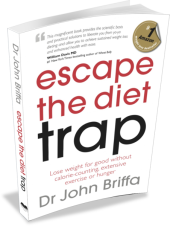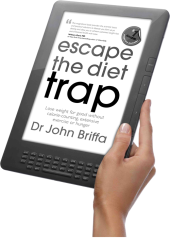One of the things you’ll hear from ‘key opinion leaders’ who promote the use of statins is that these drugs have a very good safety profile. These judgements appear to be based on the findings of studies in which statins are given to individuals in the context of ‘randomised controlled trials’ (where statins are pitted against each other and/or a placebo). However, sometimes those prone to side-effects are screened out before the study gets underway. Also, sometimes the bar for what is determined a side-effect can be set very high. This means that, in reality, statin side effects are more common and more significant than the results of trials would suggest.
Taking a look around the internet I notice that there are ever-increasingly numbers of reports from individuals who appear to have suffered at the hands of statins. I see the same thing in my practice too. Not uncommonly, I’ve seen individuals who have symptoms such as fatigue and muscle pain who have seen these disappear or improve considerably on stopping their statin, only to return on resumption of it. Maybe these people have imagined these changes or it’s some sort of placebo effect going on, but I tend to take people at face value and believe their experience is what matters here. I also happen to believe, as I alluded to above, that statin side effects are more common than some would have us believe.
Another common symptom that crops up in statin-takers is ‘fuzzy thinking’ or ‘brain fog’. I was interested to read about a recent study [1] (report here) which found statins can have a very unusual effect on nerve cells (neurons).
The research, conducted at the University of Arizona, involved exposing nerve cells from the fruit fly to over 1,000 drugs in blind fashion (meaning that the researchers did not know what drugs were being added to the nerve cell cultures). At the end of the experiments, in four instances, the nerve cells developed an appearance of ‘beads on a string’. Here’s a ‘before (left) and after (right)’ photo.
It is believed that these bead-like growths within the nerve cells would hamper nerve transmission. So, here’s the kicker: in all four instances where this change occurred, the drug to which the nerve cells were exposed was a statin.
In the report about this study I linked to, the researchers involved in this study point out that there’s a chance that some people are more genetically susceptible to neurological statins than others, and that’s certainly valid in my opinion. Also, it should perhaps be borne in mind that culturing fruit fly cells with drugs in the laboratory does not necessarily mirror what happens when human beings take statin drugs orally.
However, it is known that certain statins are able to be absorbed into the brain (across the ‘blood brain barrier’) where, potentially, they may exert harmful effects. The statins which confer the greatest risk in this respect are described as ‘lipophilic’ (attracted to fat) statins and include commonly prescribed agents such as atorvastatin (Lipitor) and simvastatin (Zocor).
References:
1. Kraft R, etal. A cell-based fascin bioassay identifies compounds with potential anti-metastasis or cognition-enhancing functions. Disease Models & Mechanisms 2012;6(1): 217[hr]
[box style=”rounded” border=”full”]
Dr John Briffa’s best-selling ESCAPE THE DIET TRAP – lose weight without calorie-counting, extensive exercise or hunger is available in the UK and US
“This magnificent book provides the scientific basis and practical solutions to liberate you from yo-yo dieting and allow you to achieve sustained weight loss and enhanced health with ease.”
William Davis MD – #1 New York Times bestselling author of Wheat Belly
To read some of the dozens of 5-star reviews for this book [button link=”http://www.drbriffa.com/amazon-reviews-for-escape-the-diet-trap/” color=”silver” text=”dark” window=”yes”]click here[/button]
To buy a paperback copy of the book from amazon.co.uk [button link=”http://www.amazon.co.uk/Escape-Diet-Trap-John-Briffa/dp/0007447760/ref=tmm_pap_title_0?ie=UTF8&qid=1324815918&sr=1-1″ color=”orange” window=”yes”]click here[/button]
To buy a kindle version of the book from amazon.co.uk [button link=”http://www.amazon.co.uk/Escape-the-Diet-Trap-ebook/dp/B005ODY0RW/ref=tmm_kin_title_0?ie=UTF8&qid=1324815918&sr=1-1″ color=”orange” window=”yes”]click here[/button]

To buy a print copy of the book from amazon.com [button link=”http://www.amazon.com/Escape-Diet-Trap-calorie-counting-extensive/dp/0957581602/” color=”orange” window=”yes”]click here[/button]

To buy the kindle version of the book from amazon.com [button link=”http://www.amazon.com/dp/B00BLQ40QM” color=”orange” window=”yes”]click here[/button]
[/box]
